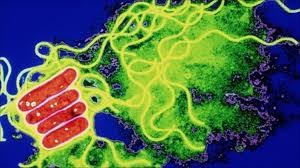
The Hard Truth About Legionella Control
Water safety issues are grabbing the headlines in recent months. The deaths reported from Legionnaires disease are particularly disturbing. Knowing that the transmission of this illness is sometimes attributed to cooling towers, we are doing our best to educate our customers.
New York State is the first state to issue legislation around Legionella control in cooling towers. In a recent document, their Department of Health writes:
“Legionella is common in the environment and grows best in warm water, so when we test cooling towers and evaporative condensers, we are likely to find it. What is important to know is how much legionella is there.”
Additional insight is provided below in OSHA’s publication:
Conditions that Promote Legionella Growth
- Legionella pneumophila bacteria are widely distributed in water systems. They tend to grow in biofilms or slime on the surfaces of lakes, rivers and streams, and they are not eradicated by the chlorination used to purify domestic water systems. Low and even non-detectable levels of the organism can colonize a water source and grow to high concentrations under the right conditions.
- Water conditions that tend to promote the growth of Legionella include:
- Stagnation
- Temperatures between 20° and 50°C (68° – 122°F) (The optimal growth range is 35° – 46°C [95° – 115°F])
- pH between 5.0 and 8.5
- Sediment that tends to promote growth of commensal microflora
- Micro-organisms including algae, flavobacteria, and Pseudomonas, which supply essential nutrients for growth of Legionella or harbor the organism (amoebae, protozoa)
Additional insight is provided below in OSHA’s publication:
At Chardon Laboratories, we remain committed to helping our customers control this problem. Here are some things to keep in mind:
- Biocide and other chemical treatments are often adequate to provide control. However, recent research and findings indicate that it’s not always enough. System design and maintenance procedures are also important.
- Legionella control guidelines continue to evolve and are agencies are recommending written plans that outline the various components of assessment, control, testing and corrective action. In New York, it’s mandatory. It is speculated that these regulations will migrate to other areas, particularly where there are outbreaks, illness and deaths.
- Testing regulations have tighter control limits and the testing protocols have changed.
- We’ve measured specific pathogenic species and serogroups for years, now guidelines are referring to all species and all serogroups (i.e. the genus of Legionella).
- It is common to find Legionella in the raw water entering your cooling tower. Cities like Flint, Michigan, are representative of the problem of Legionella in their water sources.
- Legionella is sometimes protected inside biofilm and amoeba and is not always detectable until it “amplifies” or explodes, causing an outbreak.
- System design and engineering is essential. It is also important to provide regularly scheduled inspections, cleanings and flushes.
- Bacteria thrives where there is poor water flow and areas within the water system where water is either stagnant (dead-legs) or trapped in pipework that is permanently capped (dead-ends). It is also commonly found in redundant/off-line pumps.
- Even though we use biocides to control the bacteria, biocide can’t kill what it doesn’t contact.
To learn more about Chardon Laboratories’ Legionella solutions, please call (380) 224-7395.
